I looking for a way in which I using a for loop can iterate through a bigger matrix, in which each iteration will output a sub matrix of size (row, col, depth) (6,3,3).
My big matrix is stored as numpy matrix, and would possible also like the each iteration to be outputted as such.
>>> import numpy as np
>>> a = np.random.rand(6*3,3*3,3)
>>> print a.shape
(18, 9, 3)
>>> print a
>>> b
The variable b should contain all the sub matrixes of size (6,3,3) from matrix a. Each submatrix should not overlap with the prior.
